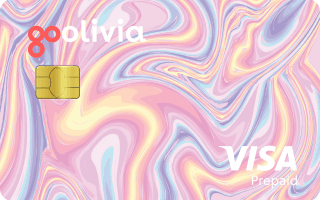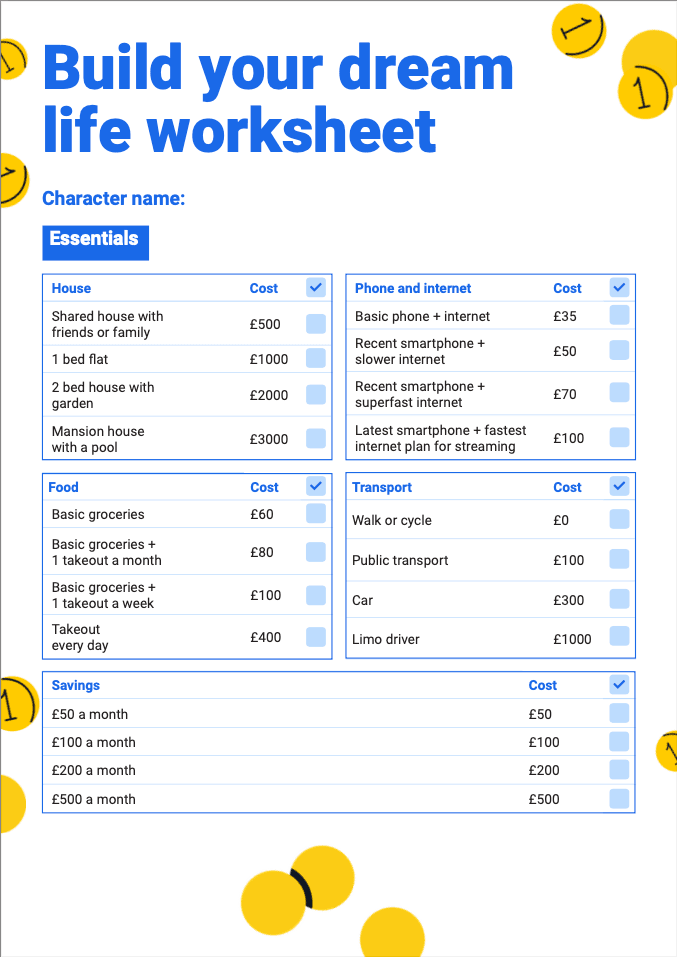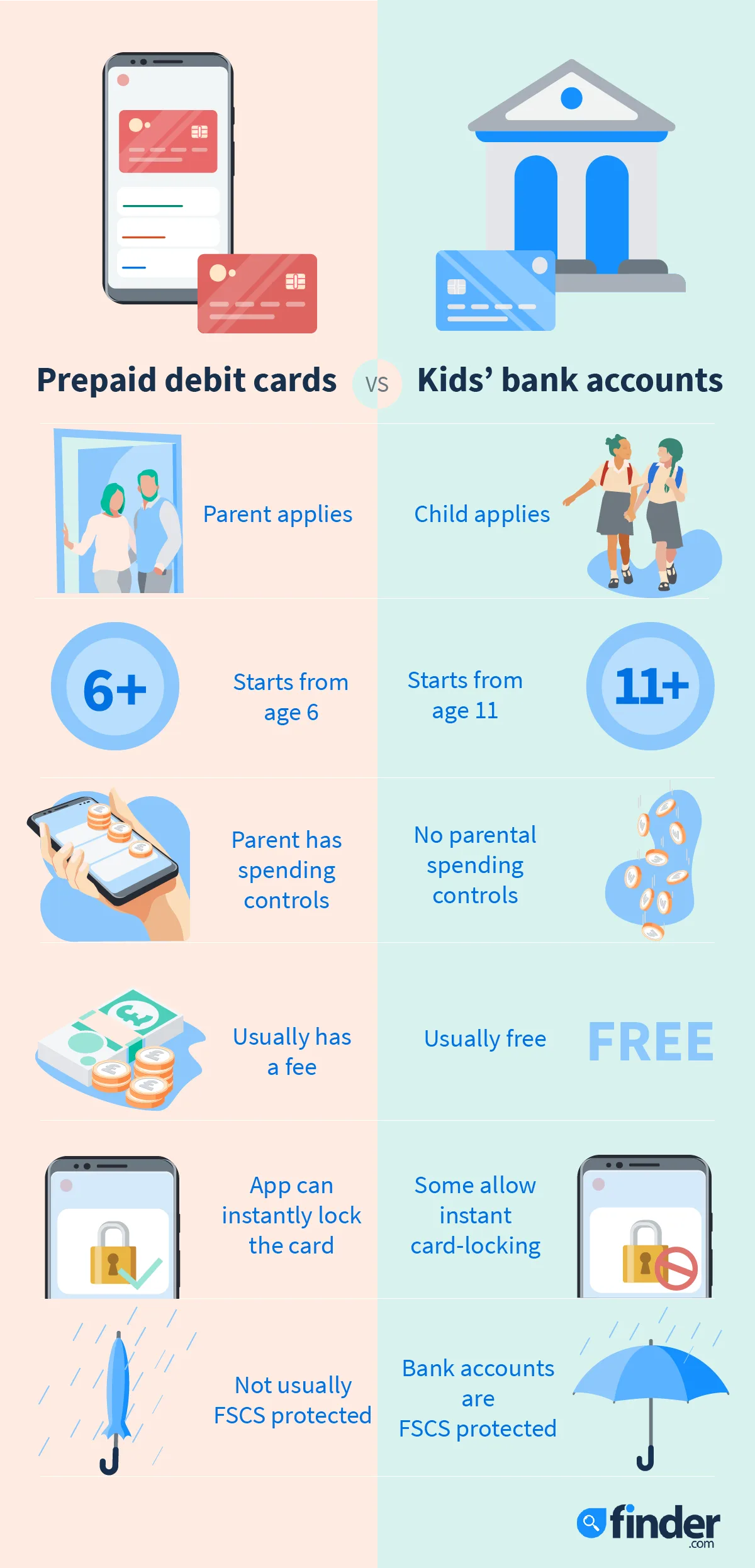

Let’s talk money: Kids’ games and challenges
Help your kids learn about budgeting and saving with our “build your dream life” challenge. Watch the video above to refresh your knowledge, click below to download the instructions and worksheets, then get the whole family together and find out who would prioritise a pet horse over a mansion with a pool.All the content may be republished with a link to this page
Press enquiries
Meet Finder’s banking experts
Kate Steere
Editor
Matthew Boyle
Banking publisher
Louise Bastock
Editor & video lead
Michelle Stevens
Deputy editor

George Sweeney DipFA
Deputy editor
Liz Edwards
Editor-in-chief









Children’s spending: What you need to know
RIP piggy bank. Most kids over the age of 10 now use some sort of app to manage their money. When we polled 1,000 kids aged 10 to 15 in 2021, we found that 3 in 5 used either a banking app or a pocket money app like GoHenry or Rooster Money.
Children’s pocket money apps, and the colourful debit cards that go with them, really took off in 2021 and they’re not just for older kids. Both GoHenry and Rooster Money, along with another brand, nimbl, aim their cards at age 6+ while Osper’s cards are for age 8+.
While the apps tend to have more interesting, and educational, features than your banking app offers, the main differences between these apps and a plain, old bank account are the parental controls and notifications, the ability for kids to earn money by doing chores, and the subscription cost. Children’s pocket money cards and apps cost a few pounds a month, while a child’s bank account is generally free. Pocket money apps typically offer a free trial, though.
Two challenger banking brands – Revolut and Starling Bank – offer a dedicated children’s app with a card and many of the features of their pocket money app rivals. And NatWest recently bought Rooster Money, so the gap is narrowing. But we’ve set out the main differences between bank accounts and pocket money apps below.
Children’s savings: What you need to know
It’s never too early to start a savings habit. Children’s savings accounts are slightly different from their adult counterparts as they can only be opened by the child’s parent or legal guardian. You’ll typically also get a higher rate of interest, as banks want to establish a relationship with customers from an early age in the hope they stay on into adulthood.
What types of children’s savings accounts are there?
There are several. Picking the right one will depend on several factors. What kind of access do you or your child want? What are they saving for? Are you looking to earn a high rate of interest? Are you depositing a hefty sum or planning to so that tax might be a consideration?
The most common types of children’s savings accounts are regular savings accounts, easy access savings accounts, fixed bonds and junior ISAs (which are tax-free but have an annual limit). There’s also the option to take out Premium Bonds for your child. These offer the chance to win tax-free prizes each month rather than earn interest.
Do children’s pocket money apps offer savings accounts?
Several pocket money apps have a savings section, but this is typically just an area on the app where your child can set aside money, not a savings account. But as digital banking evolves, these could become interest-paying accounts.
How much control will my child have over their savings?
Access will depend on your child’s age, the account type and the terms of the account you choose. Generally, the older the child, the more control they can have over their savings. However, if you open a junior ISA for your child, neither you nor they can touch the money until they turn 18.
What happens to a children’s savings account when my child turns 18?
Most accounts will be converted to regular instant-access savings accounts when your child turns 18 years old. The provider will normally contact you and your child in advance to explain the new terms that apply to the account.
If the account is a junior ISA, it will become an adult ISA and the tax-free benefits will remain as long as the account isn’t closed and you stay within the annual tax-free deposit limit. More on junior ISAs below.
Saving & investing for their future
In a bid to encourage parents to save for their kids’ future, the government offers tax incentives through junior ISA (JISA) accounts for kids. These are long-term savings accounts and as long as you deposit no more than the annual maximum (£9,000 in the tax year ending April 2023), the returns you get are tax free.
There are 2 types: cash JISAs and stocks and shares JISAs. The latter is an investment and your capital is at risk, as with any investment, but your returns could be bigger than those in a cash JISA. The money is locked up until the child turns 18, and it belongs to the child. A child can have one or both types of ISA.
Children’s banking resources
- Children’s savings calculator. If your child is saving for something in particular, say a new bike or a video game, you can use this calculator to work out how long they will need to save for.
Find out how many more months you need to save to reach your desired savings goal
All investing should be regarded as longer term. The value of your investments can go up and down, and you may get back less than you invest. Past performance is no guarantee of future results. If you’re not sure which investments are right for you, please seek out a financial adviser. Capital at risk.
Children's accounts news & launches

New call for money lessons in school as 4 in 5 kids feel short-changed
A new call for better financial education in schools follows a report by the Education Committee.
Read more…
GoHenry expands kids’ learning features in the app
GoHenry adds advanced learning modules for children aged 12+ to its Money Missions – all the details here.
Read more…
Lloyds Bank launches combined spending and savings account for kids
Lloyds Bank launches Smart Start, a children’s account which combines both spending and savings accounts under one app.
Read more…More guides on Finder
-
Moneybox vs Hargreaves Lansdown (HL)
Hargreaves Lansdown and Moneybox are both investment platforms with a lot to offer. We compare their features, fees, account types and more – side by side in Moneybox vs Hargreaves Lansdown (HL).
-
How to get free money online: Ways and tips to earn free cash
Free money might sound too good to be true, but there are many ways you can get your hands on some extra cash.
-
Moneyfarm vs Hargreaves Lansdown (HL)
Hargreaves Lansdown and Moneyfarm are both investment platforms with a lot to offer. We compare their features, fees, account types and more – side by side in Moneyfarm vs Hargreaves Lansdown (HL).
-
Vanguard vs Freetrade
Freetrade and Vanguard are both investment platforms with a lot to offer. We compare their features, fees, account types and more – side by side in Vanguard vs Freetrade.
-
Bex Card review: A prepaid card for kids with a low fee.
If your child is aged between 6 and 18, the Bex card could be the first step to giving them some financial freedom.
-
XTB vs Trading 212
Trading 212 and XTB are both investment platforms with a lot to offer. We compare their features, fees, account types and more – side by side XTB vs Trading 212.
-
Moneybox vs Trading 212
Trading 212 and Moneybox are both investment platforms with a lot to offer. We compare their features, fees, account types and more – side by side in Moneybox vs Trading 212.
-
InvestEngine vs Trading 212
Trading 212 and InvestEngine are both investment platforms with a lot to offer. We compare their features, fees, account types and more – side by side in InvestEngine vs Trading 212.
-
Best day trading stocks for 2024
Find out how to spot some of the best day trading stocks available in the UK and abroad, along with tips for managing your investment portfolio on a day-to-day basis.
-
Wealthify vs Vanguard
Vanguard and Wealthify are both investment platforms with a lot to offer. We compare their fees, features, account types and more – side by side in Wealthify vs Vanguard.










